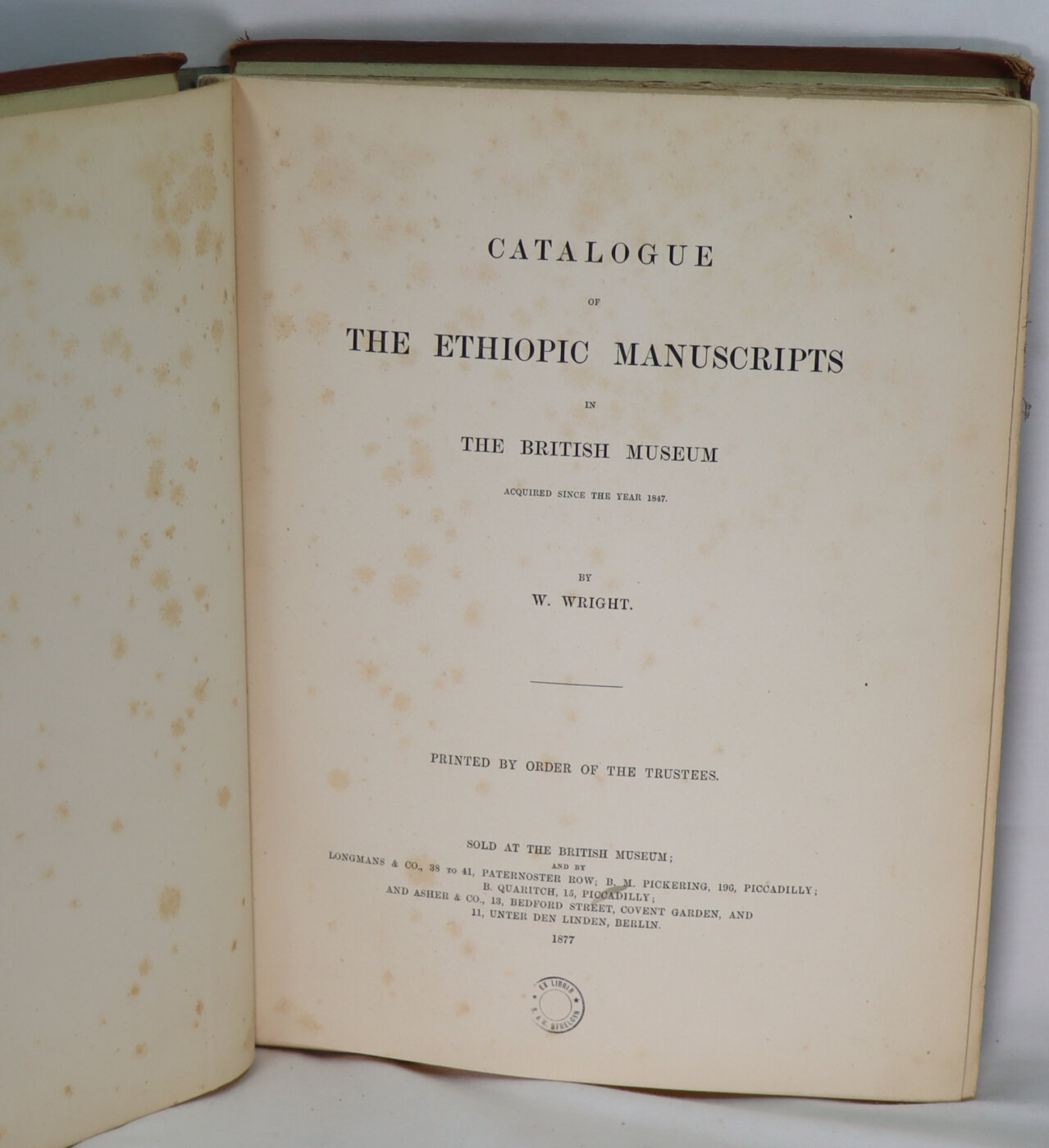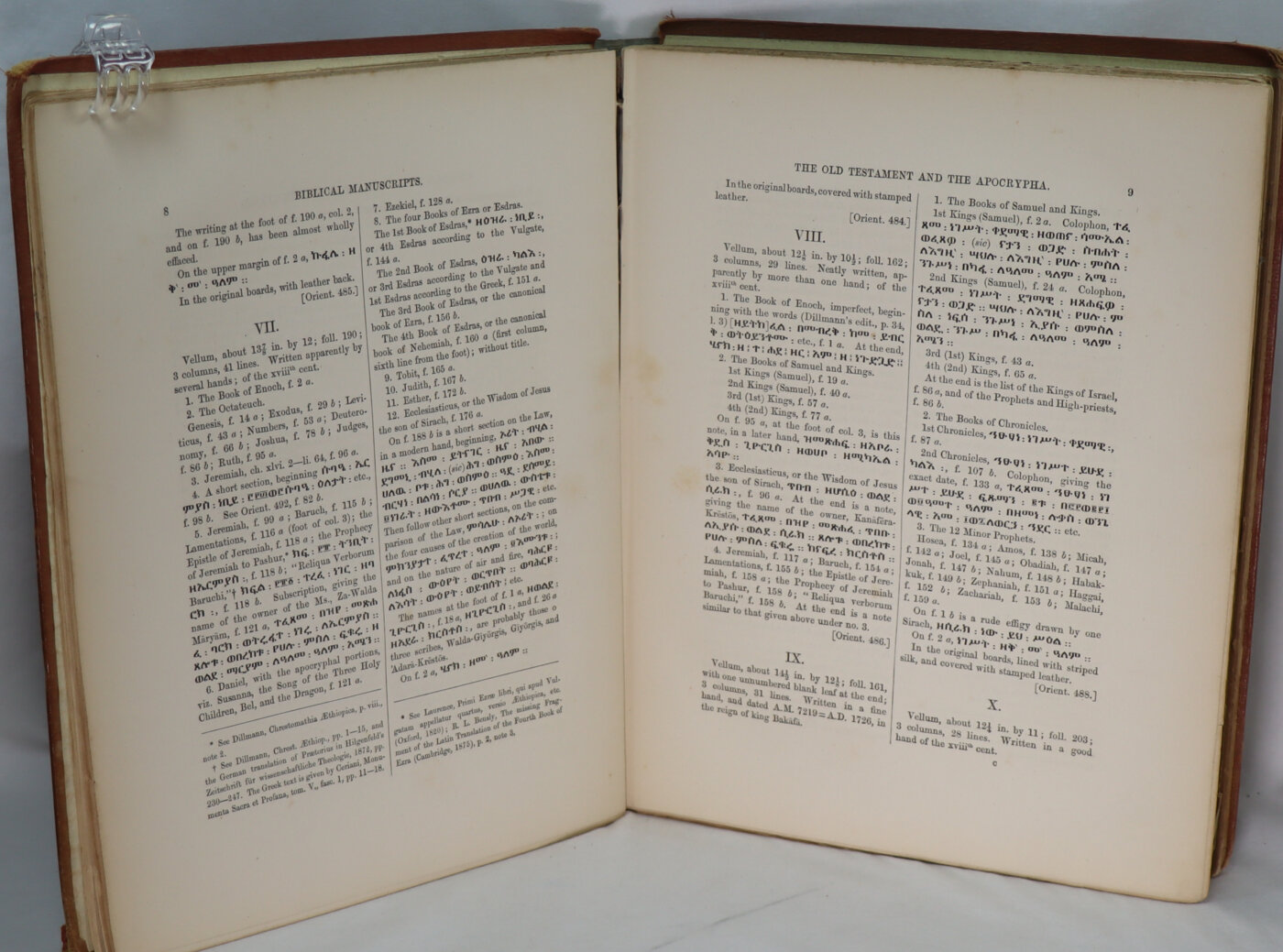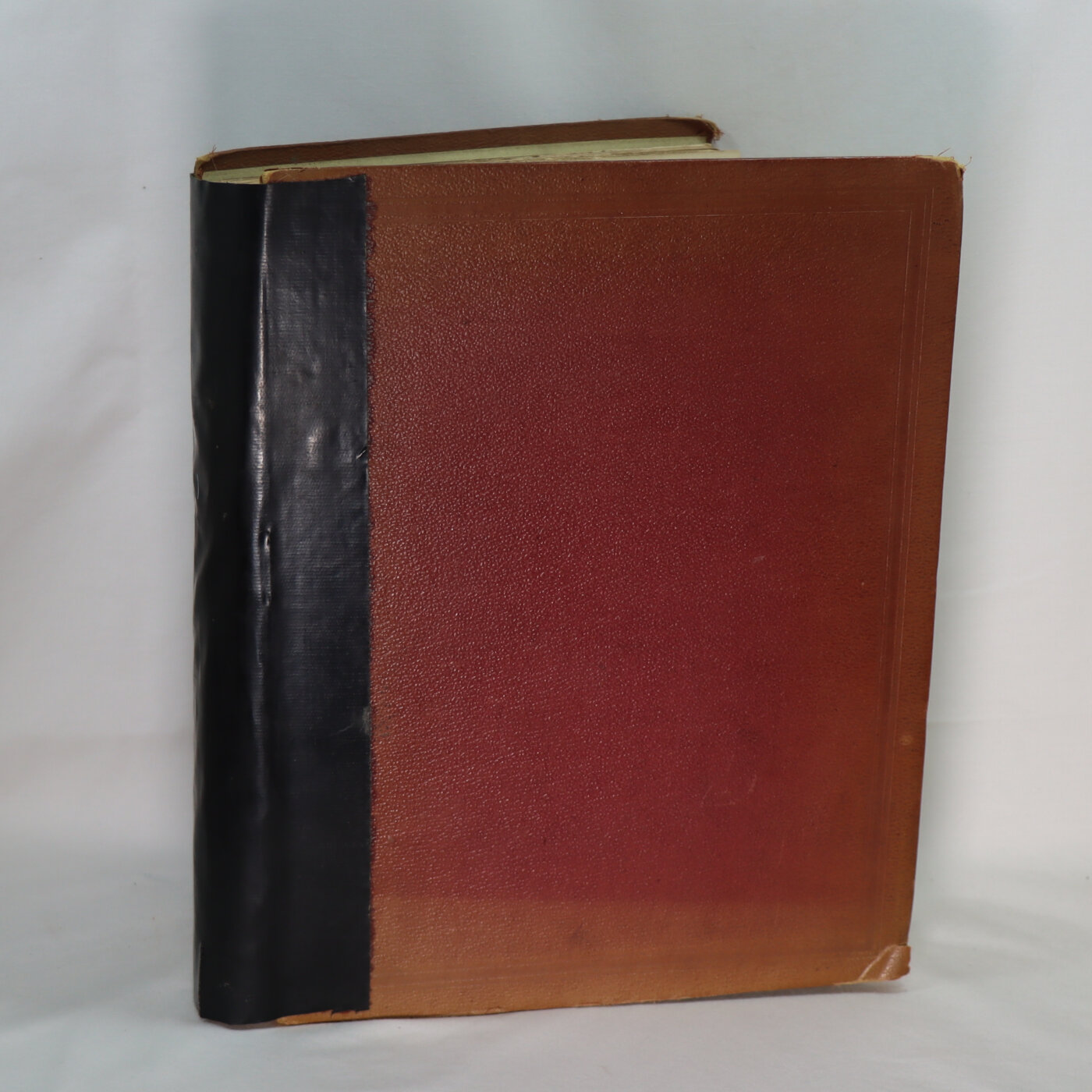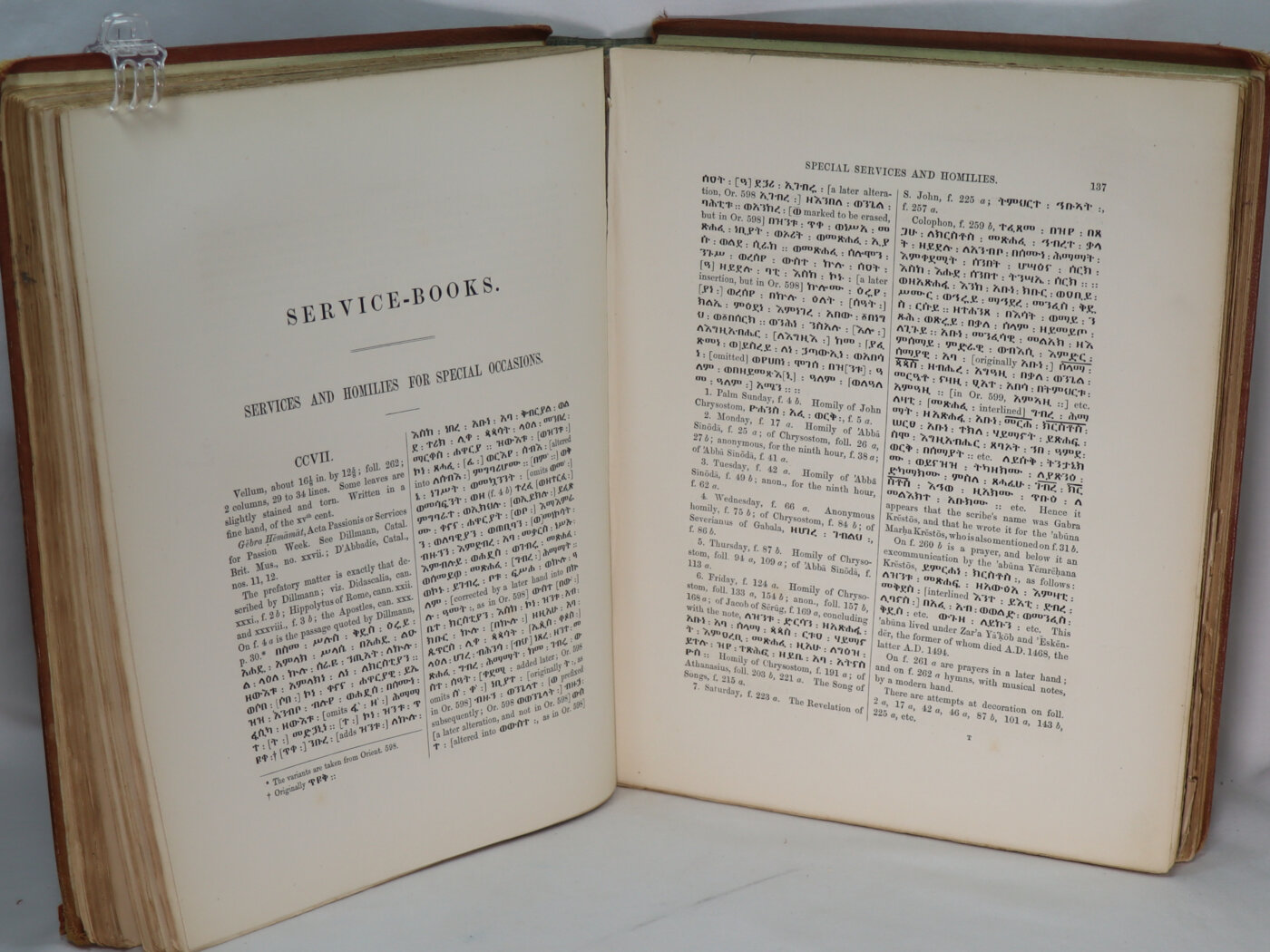Catalogue of Ethiopic Manuscripts in the British Museum.
By W Wright
Printed: 1877
Publisher: British Museum. London
| Dimensions | 27 × 33 × 4 cm |
|---|---|
| Language |
Language: English
Size (cminches): 27 x 33 x 4
Condition: Poor (See explanation of ratings)
Your items
Item information
Description
Original cloth boards, spine missing with rough tape repair.
-
We provide an in-depth photographic presentation of this item to stimulate your feeling and touch. More traditional book descriptions are immediately available.
Printed by order of the Trustees of the British Museum. Department of Oriental Printed Books and Manuscripts. Date:1877
-
Note: This book carries a £5.00 discount to those that subscribe to the F.B.A. mailing list.
An original First Edition. Contents clean and very readable. Sometime in the past the spine of the book broke and was carefully replaced with masking tape allowing the book to remain fully intact and usable.
Ethio-Semitic (also Ethiopian Semitic, Ethio Semitic, Ethiopic or Abyssinian) is a family of languages spoken in Ethiopia, Eritrea, and Sudan.They form the western branch of the South Semitic languages, itself a sub-branch of Semitic, part of the Afroasiatic language family.
With 57,500,000 total speakers as of 2019, including around 25,100,000 second language speakers, Amharic is the most widely spoken of the group, the most widely spoken language of Ethiopia and second-most widely spoken Semitic language in the world after Arabic. Tigrinya has 7 million speakers and is the most widely spoken language in Eritrea. There is a small population of Tigre speakers in Sudan, and it is the second-most spoken language in Eritrea. The Ge’ez language has a literary history in its own Ge’ez script going back to the first century AD. It is no longer spoken but remains the liturgical language of the Ethiopian and Eritrean Orthodox Tewahedo Churches, as well as their respective Eastern Catholic counterparts.
The linguistic homeland of the South Semitic languages is widely debated, with some sources, such as A. Murtonen (1967) and Lionel Bender (1997). suggesting an origin in Ethiopia, and others suggesting the southern portion of the Arabian Peninsula. A recent 2009 study based on a Bayesian model suggested the latter, with Ethiosemitic being introduced from southern Arabia some 2,800 years ago. This statistical analysis could not estimate when or where the ancestor of all Semitic languages diverged from Afroasiatic, but it suggested that the divergence of East, Central, and South Semitic branches most likely occurred in the Levant. According to other scholars, Semitic originated from an offshoot of a still earlier language in North Africa, perhaps in the southeastern Sahara, and desertification forced its inhabitants to migrate in the fourth millennium BCE – some southeast into what is now Ethiopia, others northeast out of Africa into Canaan, Syria and the Mesopotamian valley.
The division of Ethiopic into northern and southern branches was proposed by Cohen (1931) and Hetzron (1972) and garnered broad acceptance, but has been challenged by Rainer Voigt, who concludes that the northern and southern languages are closely related.
Condition notes
Want to know more about this item?

Related products
Share this Page with a friend














